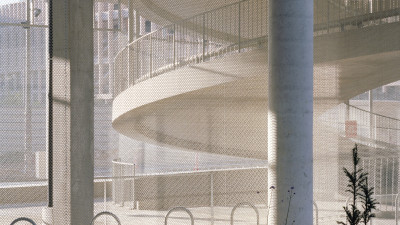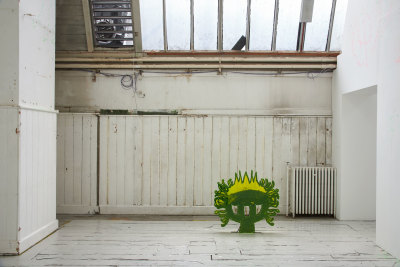Tasting architectural drawings
Tasting architectural drawings
By Neil Bingham
Published 2 June 2014
Neil Bingham, curator of the RA exhibition ‘Dream Draw Work: Architectural Drawings of Norman Shaw RA’ confesses to a curatorial crime.
-
I licked an architectural drawing by Norman Shaw.
I don’t know what came over me. It was a sudden impulse. I’ve been a curator of architectural drawings for nearly thirty years, and handled probably hundreds of thousands of drawings, and never done such an unprofessional thing. But over the previous two years of spending a couple of days a week cataloguing the Norman Shaw collection of drawings in the Collections and Library of the Royal Academy in preparation for the exhibition, I think what happened was that my sense of taste had finally had enough, it was as curious as the other four of my senses who were getting all the fun: sight was enjoying Shaw’s fine draughtsmanship and clever design, touch was luxuriating in feeling the different types of Victorian papers, smell was picking up on the slightly perfumed mustiness of the sheets, and hearing caught the gentle rustle of handling. My taste buds obviously felt left out.
-

Norman Shaw RA, Working drawing of ‘Details of lower part of street front’, New Zealand Chambers, 34–35 Leadenhall Street, London, 1872.
Pencil, black ink and coloured washes on paper. ©Royal Academy of Arts, London. Photo: Prudence Cuming Associates Ltd..
-
Poor taste, you might say. Yet, actually, I know my tongue has not been the only one near the drawings. Shaw himself, and no doubt many of his office staff who helped in preparation of the drawings, have left their saliva DNA on a few. Watercolourists, and Shaw was a precise master in applying coloured washes, know that a bit of spit keeps the brush moist. But more noticeably, the backs of many of Shaw’s drawings are covered in licked Penny Red stamps. With the introduction of the pre-paid postage stamp in 1840, and with highly reliable and organised postal services, Victorian architects commonly just folded their drawings up and sent them by mail, not bothering with an envelope. One such drawing that will be showing in the exhibition is an especially wonderful example: on the front is Shaw’s colourful design for an organ case, while on the back, which is labelled ‘Book Post’, there are five postage stamps, four addresses and more than a dozen cancellation marks showing how the drawing travelled between Shaw in London, the cabinetmaker J. W. Waddington in Bradford, the organ’s donor G. Alderson Smith in Bingley and then back to Shaw. Moreover, the edges of gummed sheets of stamps were also frequently used for repairing the backs of drawings, and a small piece is just visible on the organ drawing beneath the stronger strips of linen that were used to strengthen the folds.
-

Norman Shaw RA, Design for organ case, Church of the Holy Trinity, Bingley, Yorkshire: plans, sections and elevation (recto), 1869.
Pencil, black ink and coloured washes. ©Royal Academy of Arts, London. Photo: Prudence Cuming Associates Ltd..
-

Norman Shaw RA, Design for organ case, Church of the Holy Trinity, Bingley, Yorkshire (verso), 1869.
Black ink inscriptions, black ink stamps and Victoria Penny Red stamps on paper with linen-strip repairs. ©Royal Academy of Arts, London. Photo: Prudence Cuming Associates Ltd..
-
This immediate and intimate snapshot of how Shaw and his talented staff worked is what I have attempted to bring to life in the exhibition. It is a lost world now, architectural drawings made my hand, painstakingly and lovingly crafted, where one of Shaw’s working drawings speaks to the stonemason or joiner as beautifully and intriguingly as one of his famous pen-and-ink drawings made for the public to be shown in the Summer Exhibition.
Oh, and by the way, about that drawing I licked … it tasted like chicken.
-

Norman Shaw RA, Presentation drawing of New Zealand Chambers, 34–35 Leadenhall Street, London: perspective, 1873.
Black ink on paper. ©Royal Academy of Arts, London. Photo: Prudence Cuming Associates Ltd..
-
Neil Bingham is curator of the RA exhibition Dream Draw Work: Architectural Drawings of Norman Shaw RA.







